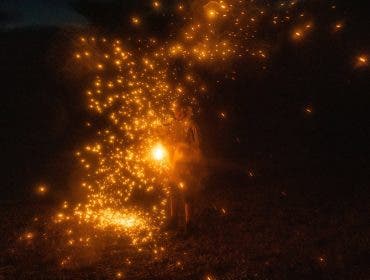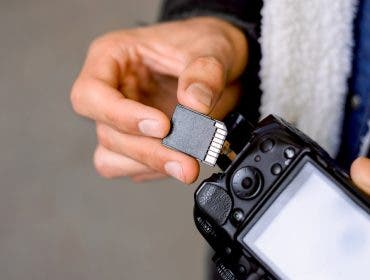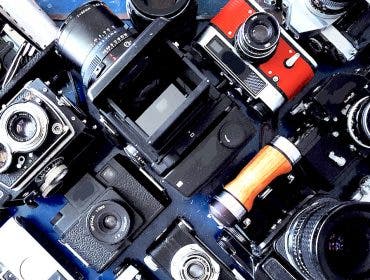The artistic aspect of photography feeds our passion and dedication. However, the technical aspect is essential to creating good photographs. The kind we want to print and exhibit in galleries or showcase in online portfolios. Concepts such as the magnification ratio help us understand how to compose images and choose the right gear.
Technical know-how may seem less exciting than planning a photo hiking trip, but it is key for our photography. Read along to learn everything you need to know about the magnification ratio and how it influences your photos.
What Is the Magnification Ratio?
The magnification ratio is the ratio between the size of an object in real life and the size of its representation on a camera’s sensor. For example, suppose you photograph a two-centimeter object and it takes up one centimeter on your camera’s sensor. In that case, the magnification ratio is 1:2 or 0.5x.
The magnification ratio may be sub-unitary, i.e., the object’s representation on the camera’s sensor is smaller than its real-life size. A portrait of a person would be an example. It may be supra-unitary, i.e., the object’s representation is larger than its real-life size. Like a picture of a snowflake. Finally, we have 1:1 i.e., the object’s representation on the camera’s sensor is equal to its real-life size. For instance, a photo of an insect.

Although the magnification ratio often relates to photographing tiny subjects (macro photography), it should be considered with every photographic genre. And that’s because although the magnification ratio is dictated by the lens, the sensor and camera-to-subject distance play their part too. Furthermore, it influences not only the size of a subject in the photograph but also how much of it will be in focus, which impacts clarity and composition.
The Magnification Ratio, Focal Length, and Focusing Distance
The magnification ratio of a lens is given, at least in theory, by the focal length and minimum focusing distance. The common knowledge is that longer focal lengths and shorter focusing distances may help you achieve a higher magnification ratio.
As you know, the 50mm focal length produces the closest representation to human eyesight. With focal lengths longer than 50mm, objects look larger than we see them with the naked eye. With focal lengths shorter than 50mm, objects look smaller than we see them. Based solely on the focal length, a lens is capable of magnifying an object by making it seem closer, with a factor given by the ratio between its focal length and 50mm (e.g., for a 200 mm telephoto lens, the value is 4x). Keep in mind that this value is NOT the magnification ratio. However, by representing the object larger than it is, the magnification ratio gets higher, so the focal length is part of the equation.

Camera to Subject Distance
In addition to the focal length, the magnification ratio depends on the camera-subject distance. If you can get closer, the object will look larger. However, you can’t get closer than the lens’ minimum focusing distance. So, here is where you’ll achieve the maximum magnification ratio. Of course, there are many different lens designs. Thus, It would be impossible for you to calculate the magnification ratio for all lenses using the same formula. For macro lenses, for example, a high magnification ratio is the ultimate purpose. This means you can find products that “defy” what you thought possible.
To help you out, manufacturers tell you the magnification ratio of the lens, alongside the focal length and minimum focusing distance. For example, the Panasonic Leica DG Elmarit 200mm f/2.8 is a 200mm lens with a minimum focusing distance of 3.8ft (1.15m) and a maximum magnification of 0.4x. The Nikon 200mm f/4D IF-ED features the same 200mm focal length. Still, being a macro lens, it has a shorter minimum focal distance (1.57ft ( 0.48m)) and a higher magnification (1.0x).
Things to Consider When Purchasing a Lens
Therefore, when you buy a lens, consider its features – focal length, minimum focusing distance, and magnification ratio – as well as its intended purpose. Macro lenses are purpose-built for photographers who want to achieve higher magnification ratios and shoot from short distances. For instance, the Canon RF 100mm f/2.8 L Macro IS USM Lens has a 1.4x magnification ratio. Telephoto and super telephoto lenses are designed to photograph subjects at long distances and have lower magnification ratios (e.g., Sigma 500mm f/4 DG OS HSM Sports Lens, 0.15x magnification ratio). Nevertheless, they make objects seem larger because of their long focal lengths. Wide-angle lenses not intended to be macro lenses have short focal lengths, short minimum focusing distances, and low magnification ratios (e.g., Pentax HD Pentax-D FA 15-30mm f/2.8 ED SDM WR Lens, 0.2x magnification ratio). However, you can get pretty creative with close-ups due to their short focusing distance.
As you can see, making objects look closer to their real-life size in your photographs is not as much about the magnification ratio as it is about understanding your photo gear and using it creatively.
Why Camera Sensor Size Matters
The magnification ratio is a property of the lens because the lens generates the representation of the object. However, the sensor is the canvas that receives the image, which means it has a say in how your photograph will look.
Camera sensors have various sizes, from 43.8×32.9 mm to 53.7×40.2 mm in a medium format camera to 4.54 x 3.42 mm in an iPhone 5 smartphone camera, the most popular being the full-frame 36×24 mm sensor and the APS-C sensors with sizes between 20.7×13.8 mm and 28.7×19.1 mm. The larger the sensor is, the higher the chances are to frame a larger object entirely.
For example, suppose you use a medium format camera with a 1:1 magnification ratio lens. In that case, you can frame a 43.8×32.9 mm object without cutting it at the edges and even have some negative space around it. But if you use the same lens with an APS-C sensor camera, the object will be cropped at the available sensor size, which is 20.7×13.8 mm. Visually, the effect is similar to zooming in, although the object’s representation has the same size. And if you create identical prints of the two images, most people will say that the object is larger in the cropped version.


Larger sensors have higher resolutions and produce high-quality photographs that can be exhaustively edited and printed at large scales. Overall, they are a better choice. But suppose you want to fill the frame with a subject and produce a magnification effect without truly achieving it. In that case, a smaller sensor with a high resolution may also be helpful.
Magnification Ratio and Depth of Field
If you put together what gets you a high magnification ratio – long focal lengths and short focusing distances, you get, by default, a narrow depth of field. Above the 1:1 magnification ratio, you often have an area of just a few millimeters in focus, and everything else is blurred. To increase the depth of field without decreasing the magnification ratio, you may only close the aperture (use a higher f-stop). However, a narrow aperture means less light entering the lens, which results in a darker image. You may either slow down the shutter speed, increase the ISO value, or use an additional light source to increase ambient light.
However, keep in mind that high magnification ratios also increase the lens’ effective f-stop, making the image darker. That’s because the lens gets farther away from the sensor to achieve longer focal lengths and to focus closer. The effect is visible at magnification ratios higher than 0.5x. Roughly, the effective f-stop increases with one stop per 0.5x magnification.
Some camera models show you the effective f-stop in the viewfinder, others show you the f-stop you set, so be aware. If you use the camera in Auto mode, it will automatically compensate for the lack of light by slowing down the shutter speed. A tripod can be used to stabilize the camera when using high-magnification ratio lenses.
Although increasing the effective f-stop has the effect of increasing the depth of field, it isn’t enough. You will still notice a very narrow depth of field at high magnification ratios. Alongside trying to get a wider depth of field by adjusting camera settings, macro photographers rely on positioning the camera to have the best feature of the subject in focus and focus stacking.

Conclusion
The magnification ratio weighs more for macro photographers, but it is something to consider regardless of your preferred photographic genre. Every lens provides a magnification ratio that influences the composition, photo setup, and camera settings you use. It may help you make a subject stand out and harmoniously fill the frame or make everything look awkward. Furthermore, the magnification ratio may interfere with the depth of field and effective aperture, leaving you struggling to get enough light to enter the camera or have the focal point in focus. Unfortunately, the term magnification is used for different concepts in photography, which is confusing. Rely on the lens specifications given by the manufacturer and consider them as a group rather than independently. Last but not least, choose the gear that fits your workflow and artistic vision.






